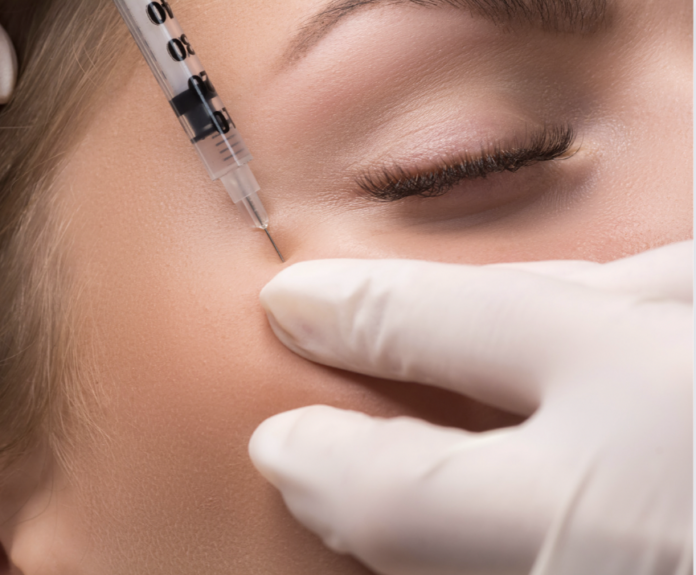
Botox vs. Fillers for Crow’s Feet: Which One is Right for You?
Crow’s feet, also known as laugh lines or character lines, are the fine lines and wrinkles that form around the outer corners of the eyes. They are a natural part of the aging process, but many people seek treatments to minimize their appearance. Two popular medspa services for treating crow’s feet are Botox and dermal fillers. In this article, we will explore the differences between these two treatments, their benefits, and potential side effects to help you make an informed decision about which option is best for you.
What Causes Crow’s Feet?
Before diving into the treatments, it’s essential to understand what causes crow’s feet. These lines form due to a combination of factors, including:
1. Age: As we age, our skin loses elasticity and collagen, making it more prone to wrinkles and fine lines.
2. Sun exposure: Prolonged exposure to the sun’s harmful UV rays can damage the skin and accelerate the aging process.
3. Facial expressions: Repeated muscle contractions from smiling, squinting, or frowning can cause lines to form around the eyes.
4. Lifestyle factors: Smoking, poor diet, and dehydration can also contribute to the development of crow’s feet.
Now that we know the causes, let’s explore the two popular treatment options: Botox and dermal fillers.
Botox for Crow’s Feet
What is Botox?
Botox is a brand name for botulinum toxin type A, a neurotoxin derived from the bacterium Clostridium botulinum. When injected into the muscles, Botox temporarily blocks nerve signals, causing the muscles to relax and reducing the appearance of wrinkles and fine lines. Botox is FDA-approved for treating crow’s feet and has been used safely for cosmetic purposes for over 20 years.
How Does Botox Work for Crow’s Feet?
Botox works by targeting the muscles responsible for causing crow’s feet. When injected into the orbicularis oculi muscle, which surrounds the eye, Botox temporarily paralyzes the muscle, preventing it from contracting and causing wrinkles. This results in a smoother, more youthful appearance around the eyes.
Benefits of Botox for Crow’s Feet
Some benefits of using Botox for crow’s feet include:
1. Quick treatment: Botox injections take only a few minutes and require no downtime.
2. Minimal discomfort: The injections are relatively painless, and any discomfort can be managed with a topical anesthetic.
3. Natural-looking results: Botox provides a subtle improvement in the appearance of crow’s feet, allowing you to maintain your natural facial expressions.
4. Temporary effects: Botox results typically last 3-6 months, allowing you to decide if you want to continue treatment or try other options.
Potential Side Effects of Botox
While Botox is generally safe, some potential side effects may occur, including:
1. Bruising or swelling: Some patients may experience minor bruising or swelling at the injection site.
2. Headache: A temporary headache may occur after treatment.
3. Eyelid drooping: In rare cases, Botox may cause temporary eyelid drooping if the toxin spreads to nearby muscles.
Fillers for Crow’s Feet
What are Dermal Fillers?
Dermal fillers are injectable substances used to add volume and smooth out wrinkles and fine lines. There are several types of fillers, but the most common for treating crow’s feet are hyaluronic acid-based fillers, such as Juvederm and Restylane. Hyaluronic acid is a naturally occurring substance in the skin that helps retain moisture and maintain elasticity.
How Do Fillers Work for Crow’s Feet?
Fillers work by adding volume to the skin, filling in the lines and wrinkles caused by crow’s feet. When injected into the skin around the eyes, hyaluronic acid-based fillers attract water molecules, plumping up the skin and smoothing out wrinkles.
Benefits of Fillers for Crow’s Feet
Some benefits of using fillers for crow’s feet include:
1. Immediate results: Fillers provide instant improvement in the appearance of crow’s feet.
2. Long-lasting effects: The results of fillers can last 6-12 months, depending on the type of filler used.
3. Customizable treatment: The amount of filler used can be adjusted to achieve the desired level of correction.
4. Reversible: If you are unhappy with the results, hyaluronic acid-based fillers can be dissolved with an enzyme called hyaluronidase.
Potential Side Effects of Fillers
Some potential side effects of fillers may include:
1. Bruising or swelling: As with Botox, minor bruising or swelling may occur at the injection site.
2. Lumps or bumps: In some cases, fillers may cause small lumps or bumps under the skin, which can be massaged away or dissolved with hyaluronidase.
3. Infection: Although rare, infection is a potential risk with any injectable treatment.
Botox vs. Fillers: Which One is Right for You?
When deciding between Botox and fillers for crow’s feet, consider the following factors:
1. Severity of crow’s feet: Botox is generally more effective for mild to moderate crow’s feet, while fillers may be better for more severe lines.
2. Desired results: If you want a more subtle improvement, Botox may be the better option. If you’re looking for more dramatic results, fillers may be more suitable.
3. Budget: Botox tends to be less expensive than fillers, but the results don’t last as long. Consider the cost of maintenance treatments when making your decision.
Ultimately, the best treatment for you will depend on your individual needs and preferences. Consult with a qualified medical professional to discuss your options and determine the most appropriate treatment for your crow’s feet.
In Summary: Botox vs. fillers for crow’s feet
Crow’s feet are a common concern for many people, but there are effective medspa treatments available to help minimize their appearance. Botox and dermal fillers are two popular options, each with its own benefits and potential side effects. By understanding the differences between these treatments and consulting with a medical professional, you can make an informed decision about which option is best for you.
Related Topic: Average cost of botox injections



